
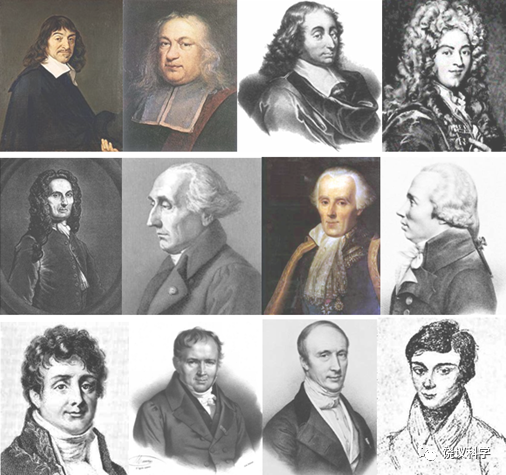
The dazzling French mathematics community, picture from pixnet.net
How good is French mathematics?
French mathematics is considered the most rigorous and high-level subject. How high is its mathematical level?
Let’s look at the Fields Medal. It is known as the Nobel Prize in mathematics. It is the highest academic award in mathematics and is even more precious than the Nobel Prize. The reason is that the Fields Medal is awarded every four years, with 2-4 places each time. Its rarity is equivalent to the World Cup and the Olympic Games.
Although it is very difficult to win an NBA championship, at least it happens every year. Taking into account the length of their careers, many mathematicians may not have the opportunity to participate in the award evaluation only a few times in their lives. The Fields Medal stipulates that it will only be awarded to "young mathematicians" under the age of 40. It is an exaggeration to say that it is tailor-made for mathematical geniuses.
It is worth mentioning that French mathematicians have won the Fields Medal for more than 20 consecutive years. The universities with the most Fields Medal winners are: Harvard University (18th), University of Paris (16th), Ecole Normale Supérieure in Paris (15th), and Princeton University (14th). It needs to be reminded that scientists in American universities are not Americans, while almost all award winners in French universities are French.
Paris is the place with the highest concentration of mathematicians in the world, such as the famous mathematical masters Veda, Mersenne, Descartes, Fermat, Pascal, d'Alembert, Lagrange, Poisson, Fourier, and Laplace , Cauchy and so on. There are many famous French mathematicians in history. In the field of calculus, French mathematicians account for almost 1/3.
The French have made great contributions to the world of mathematics. From the Vedic theorem of junior high school mathematics to the representative figure of advanced mathematics, Lagrange, and even the modern mathematics master Poincaré, France has made great achievements in the history of mathematics for hundreds of years. Always maintain strong vitality.
French mathematical masters include Descartes, Veda, Pascal, Fermat, Lagrange, Laplace, d'Alembert, Legendre, Monge, Poncelet, Cauchy, Fourier, Poincaré , Galois, Grothendieck, etc. Almost all of these mathematicians who have made countless college students "frightened" were born in France from the 17th to the 20th century.
According to statistics, France is the second country with the largest number of Fields Medal recipients in the world, second only to the United States. If calculated in terms of population ratio, France is definitely number one in the world.
The pinnacle of French mathematics is: the four "kings" of French mathematics in the 19th century - Cauchy, Fourier, Galois and Poincaré.
Interestingly, in January 2018, French President Macron visited China, and one of his team members included Cedric Villani, a famous French mathematician. He is considered a top mathematician in partial differential equations. He won the Fields Medal at the age of 36 and is known as the "Lady Gaga of mathematics."
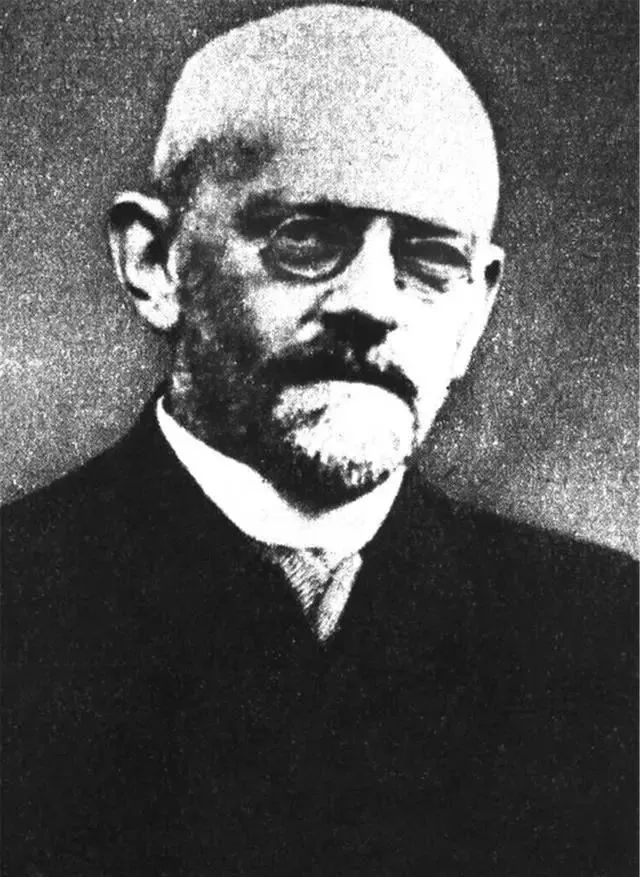
Let’s introduce the four great French mathematicians respectively:
01
Four French Mathematicians
01
Prolific mathematician - Cauchy
Cauchy (1789-1857) was a French mathematician, physicist, and astronomer. The famous calculus theory of complex functions was founded by him. Cauchy has made outstanding contributions in algebra, theoretical physics, optics, and elasticity theory.
Cauchy's mathematical achievements were not only brilliant, but also astonishing in number. The complete works of Cauchy have 27 volumes and more than 800 treatises. He is the most prolific mathematician after Euler in the history of mathematics. And his name, together with many theorems and principles, is engraved in many textbooks today.

Cauchy, image from famous-mathematicians.com
Cauchy's skills in pure and applied mathematics are very deep, especially in mathematical writing. He wrote a total of 789 papers and several books throughout his life, some of which are classics. It is said that when the "Proceedings of the French Academy of Sciences" was first published, there were so many works by Cauchy that the French Academy of Sciences had to bear a large printing cost, which exceeded the budget of the Academy of Sciences. Therefore, the Academy of Sciences stipulates that papers can only be 4 pages long, and Cauchy's longer papers can only be submitted elsewhere.
When Cauchy was a boy, his father often took him to his office in the French Senate and guided him in his studies. As a result, Cauchy had the opportunity to meet two great mathematicians, Senators Laplace and Lagrange. They appreciated Cauchy's talent very much, and Lagrange believed that he would definitely become a great mathematician in the future.
When Kesi was a student, he was nicknamed Bitter Melon because he was usually like a bitter melon, quiet and silent. Even if he said something, it was brief and confusing. Therefore, it was difficult to communicate with this kind of person. Think it is very painful. Kexi had no friends, only a group of people who were jealous of his intelligence.
02
Mathematics master of heat transfer theory——Fourier
Jean Baptiste Joseph Fourier (1768-1830), a world-famous French mathematician and physicist, was elected as an academician of the Academy of Sciences in 1817, and served as the lifelong secretary of the Academy in 1822, and later served as The lifelong secretary of the French College and the chairman of the Board of Trustees of the University of Science and Technology. His main contribution was the creation of a set of mathematical theories while studying the propagation of heat. Fourier was elected as an academician of the Paris Academy of Sciences in 1817 due to his contribution to the theory of heat transfer.

Fourier, picture from cnrs.fr
In 1822, Fourier finally published his monograph "The Analytical Theory of Heat". This classic work developed the trigonometric series method applied by Euler, Bernoulli and others in some special situations into a rich general theory. The trigonometric series was later named after Fourier.
Fourier applied trigonometric series to solve the heat conduction equation. In order to deal with the heat conduction problem in the infinite region, he derived what is currently called the "Fourier integral". All of this greatly promoted the study of boundary value problems in partial differential equations. "The Analytical Theory of Heat" influenced the process of rigorous analysis throughout the 19th century. Fourier became the lifelong secretary of the Academy of Sciences in 1822.
Fourier was extremely obsessed with thermal science. He believed that heat could cure all diseases, so one summer, he closed the doors and windows of his home, put on thick clothes, sat by the stove, and was heated to death. Fourier died in Paris, France on May 16, 1830.
Fourier's scientific achievements mainly lie in his research on heat conduction problems and the mathematical methods he introduced to advance research in this area.
03
The father of group theory - Galois

Galois
Galois died in a near-suicide duel at the age of 21. He is recognized as one of the two most romantic figures in the history of mathematics. He is a genius French mathematician who is recognized as the main pioneer of the concept of group theory and has made very important contributions to function theory, equation theory and number theory. After his father committed suicide, he gave up a career in mathematics and registered as a tutor.
Galois was born on October 25, 1811 in House No. 54 on Galois Street in La Reinburg, a suburb of Paris, France. There is now a commemorative plaque on the front of this house, which reads: "The famous French mathematician Évariste Galois was born here and died at the age of 21, 1811-1832." The commemorative plaque was installed in June 1909 by the residents of the town to pay tribute to Galois, an outstanding mathematician who has been recognized by scholars around the world as having special achievements.
Galois's most important achievement was to propose the concept of groups and use group theory to completely solve the problem of solving algebraic equations with radicals. This led to the development of a complete set of theories about groups and fields. In order to commemorate him, later generations called it Galois. Luo Hua theory. It was his theory that created abstract algebra, pushed algebra research to a new milestone, and provided a new mathematical tool for mathematical research - group theory. Galois had a great influence on the development of mathematical analysis and geometry, marking the beginning of the modern stage of mathematics development.
Galois very thoroughly transformed or reduced the solvability problem of all algebraic equations into the problem of structural analysis of permutation groups and their subgroups. This became Galois's first "breakthrough" in his work. He pioneered the study of permutation group theory and established the theory of solvability of algebraic equations, thereby thoroughly solving the problem of radical solution of general equations. Galois used ideas from group theory to discuss the solvability of equations. The entire set of ideas is now known as Galois' theory, which is one of the basic pillars of contemporary algebra and number theory.
04
Genius mathematician Poincaré
The genius French mathematician and physicist Poincaré's research involves many fields such as number theory, algebra, geometry, topology, etc., and he is called "the last mathematical generalist" by future generations. Before Poincaré, it was Gauss who was known as the world's most versatile mathematician.
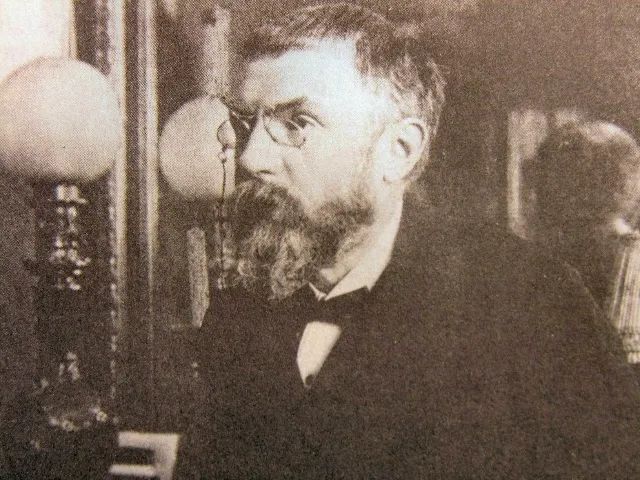
Henri Poincaré
Before Einstein, the physicist Lorentz and the mathematician Poincaré had done a lot of work in this direction, but Poincaré seemed unable to accept Einstein's special theory of relativity, although the results of the two men were almost Same. Therefore, although Poincaré gave many lectures on the theory of relativity, he never mentioned the words Einstein and the theory of relativity. Not only did Einstein not cite Poincaré's work, he claimed that he had never read it.
When Einstein's alma mater, the Institute of Technology in Zurich, wanted to hire Einstein as a professor, Poincaré wrote a letter, praising Einstein greatly. The last paragraph was very subtle: "I don't think his predictions are true." It can all be verified in the future. He is engaged in so many directions, so we should expect that some of his research will lead to dead ends. But at the same time, we hope to think that a certain direction he takes will be successful, and a certain success, Will suffice."
Poincaré passed away in 1912. An organizer in the mathematics community wrote a letter to Einstein, saying that he would publish a commemorative collection to commemorate Poincaré. Einstein delayed for four months before replying, saying that due to delays on the road, the letter had just been received and it was probably too late.
The organizers have not given up. It doesn’t matter if it’s too late. Just write it. So Einstein wrote back two and a half months later, saying that due to his busy schedule, he really had no energy to write, and finally dropped the matter.
Einstein finally fairly recognized Poincaré's contribution to the theory of relativity in his 1921 lecture. He evaluated Poincaré as one of the pioneers of relativity: "Lorentz had already recognized that the transformation named after him was fundamental to the analysis of Maxwell's equations, and Poincaré further deepened this vision..."
The famous French mathematician Adama believes that Poincaré "completely changed the situation of mathematical science and opened up new roads in all directions." The famous British mathematician Russell believes that the greatest figure in France in the early 20th century was Henry Poincaré. He once said: "When I recently visited Poincaré in his airy resting-house in the Rue Guy-Loussard, my tongue suddenly lost its function until I had spent some time to look at and bear with it what might be called the external aspects of his thought. It was only when I took on a younger look that I found myself able to start speaking.”
French mathematical talents emerge in large numbers. Over the past few hundred years, famous mathematical masters have been born. Here are some famous French mathematicians who have influenced the world.
02
Famous French mathematician who influenced the world
01
The talented young math master——Pascal
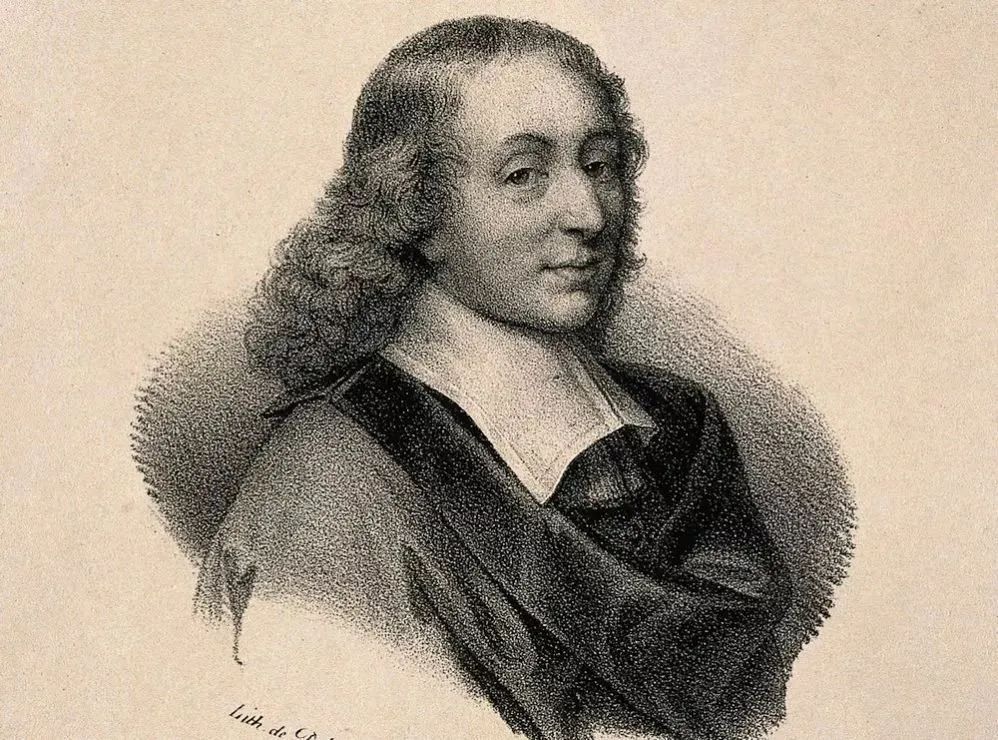
Pascal
Blaise Pascal was born on June 19, 1623 AD in Clermont-Ferrand in the Auvergne region of Dome Mountain Province. He was a French mathematician, physicist, philosopher, and essayist. Pascal achieved many achievements, and his contributions to mathematics and physics occupies an extremely important position in the history of science.
Pascal's mathematical attainments are very profound. In addition to his outstanding contributions to probability theory and other aspects, his most outstanding one is the famous Pascal's theorem. Pascal's theorem is an important theorem of projective geometry, that is, "the intersection points of the three pairs of sides of a conic inscribed in a hexagon are collinear", which he proposed in "A Treatise on Conic Sections".
In his algebra research, he published many papers on arithmetic series and binomial coefficients, and discovered the coefficient law of binomial expansions, which is the famous "Pascal's triangle". Together with the famous mathematician Fermat, he established the basis of probability theory and combinatorial theory, and derived a series of solutions to problems in probability theory. He studied the cycloid problem and derived general methods for finding the areas and centers of gravity of different curves. He calculated integrals of trigonometric functions and tangents and was the first to introduce elliptic integrals.
Pascal studied the mechanical properties of liquids and published the paper "Experiments on Fluid Equilibrium". The famous Pascal's law was recorded in this paper. In order to commemorate Pascal's outstanding contribution to the study of pressure, the International System of Units uses "Pascal" to name the unit of pressure.
It is very regrettable that such a talented young man decided to give up scientific research and devote himself to theology when he was in his prime and had great achievements. He had been religious in his youth, and one day, he had an accident while riding a carriage in Paris and almost fell into the river. Frightened, he thought that if he survived the catastrophe, he would be protected by gods, so he decided to give up science and study theology. He even went to the extreme and wrapped a spiked belt around his waist. When he thought there were thoughts in his mind that were not "pious" enough, he would hit the belt with his hands to punish himself. In the end, he tortured himself like this. He was only 39 years old. He passed away.
Pascal also had a serious shortcoming: he did not like physical activities. When he was 18 years old, his body began to weaken and he was always plagued by illness. When he was just in his early 30s, he continued to have illnesses. Due to his frailty and illness, his scientific research work was greatly affected.
02
Laplace was Napoleon’s math teacher
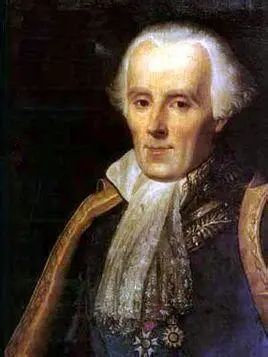
Laplace
Pierre-Simon Laplace (March 23, 1749 - March 5, 1827), a famous French astronomer and mathematician, was a master of celestial mechanics. Born in Beaumont-on-Noge, Calvados, northwest France in 1749, he was elected as an academician of the French Academy in 1816 and served as president of the Academy in 1817.
In 1812, he published the important book "Probability Analysis Theory", which summarized the entire research on probability theory at that time, discussed the application of probability in election trial investigation, meteorology, etc., and introduced the "Laplace Transform" and other . He was knighted twice during the reign of Emperor Napoleon and Louis XVIII. Laplace was Napoleon's teacher, so he had an indissoluble bond with Napoleon. Died in Paris on March 5, 1827.
Laplace mainly focused on the study of celestial mechanics. He applied Newton's law of universal gravitation to the entire solar system, and in 1773 solved a very famous problem at the time: explaining why the orbit of Jupiter was constantly shrinking, while at the same time the orbit of Saturn was constantly expanding. Laplace used mathematical methods to prove the invariance of the mean motion of the planet, that is, the size of the planet's orbit only changes periodically, and proved it to be the third power of the eccentricity and inclination. This is the famous Laplace theorem.
Laplace made many contributions to mathematics. For example, in 1812 he published the important "Theory of Probability Analysis". He has published more than 270 papers on astronomy, mathematics and physics, and his monographs total more than 4,006 pages. Among the most representative monographs are "Celestial Mechanics", "Cosmic System Theory" and "Probability Analysis Theory".
In 1796, his book "The System of the Universe" came out. Since he has been engaged in research on the theory of large planetary motion and the theory of lunar motion for a long time, he paid special attention to the study of the perturbation of celestial bodies in the solar system, the general stability of the solar system, and the dynamics of the stability of the solar system. Therefore he is known as the French Newton and the father of celestial mechanics.
Laplace's Theory of the System of the Universe is a masterpiece of classical celestial mechanics. In this book, independent of Kant, he proposed the first scientific theory of the origin of the solar system - the nebular theory. Kant's nebula theory was proposed from a philosophical perspective, while Laplace enriched the nebula theory from a mathematical and mechanical perspective. Therefore, people often call their nebula theory the "Kant-Laplace nebula theory." .
03
Descartes, the father of French analytic geometry
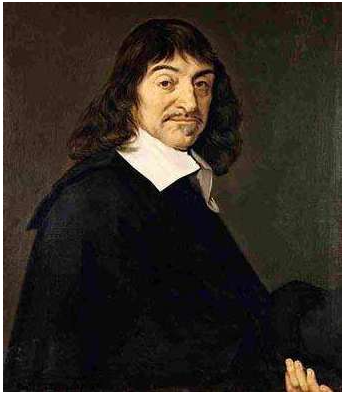
René Descartes
René Descartes was born in Touraine, Indre-et-Loire, France on March 31, 1596, and died in Stockholm, Sweden on February 11, 1650. He was a world-famous philosopher, mathematician, and physicist.
Descartes made a huge contribution to the development of modern mathematics. He is considered the father of analytic geometry because of his formulation of the geometric coordinate system. He was also the founder of modern Western philosophical thought, pioneered modern materialism and put forward the idea of "universal skepticism".
Hegel, the master of philosophy, called him "the father of modern philosophy". His philosophical thoughts deeply influenced subsequent generations of Europeans, pioneering the so-called "Continental Rationalism" philosophy. He was one of the most influential giants in European philosophy and science in the 17th century, and was known as "modern science". 's ancestor".
The Cartesian method has a double meaning. First, he placed the basic epistemological question "what is knowledge" at the center of his philosophical system. While early philosophers sought to describe the nature of the world, Descartes taught that such questions could not be answered satisfactorily without being linked to "How can I know?"
Second, Descartes believed that one should not start with faith, but with doubt (which is exactly the opposite of the view of St. Augustine and most medieval theologians, who believed that faith came first). There is no doubt that Descartes did reach orthodox theological conclusions. But readers paid far more attention to his advocacy methods than to the conclusions he reached, so the church was not without reason to worry that his writings would have a destructive effect.
Descartes emphasized that the purpose of science is to benefit mankind and make people the masters and rulers of nature. He opposed scholasticism and theology and proposed a "method of systematic doubt" that doubted everything. But he also put forward the principle of "I think, therefore I am", emphasizing that the existence of independent spiritual entities with thinking as its attribute cannot be doubted, and demonstrating the existence of independent material entities with extension as its attribute. He believes that the above two entities are both finite entities, and juxtaposing them shows that Descartes is a typical dualist in metaphysics or ontology.
Descartes also attempted to prove the existence of an infinite entity, namely God. He believed that God was the creator and ultimate cause of finite entities. Descartes's epistemology is basically idealistic. He advocated rationalism, applied geometric reasoning and deduction methods to philosophy, believed that clear concepts are truth, and proposed "innate concepts".
Descartes's view of natural philosophy is completely opposed to Aristotle's teachings. He believed that all material things were machines governed by the same mechanical laws, even the human body. Descartes also believed that in addition to the mechanical world, there was also a spiritual world. This dualistic view later became the fundamental way of thinking of Europeans.
Descartes' most famous thought is "I think, therefore I am", which means: "When I doubt the existence of everything, I don't have to doubt my own thoughts, because the only thing I can be sure of at this time is the existence of my own thoughts. exist". This famous saying, which Descartes regarded as the starting point of his philosophical system, was previously considered to be the general representative of extreme subjective idealism and was severely criticized.
Descartes' most significant contribution to mathematics was his creation of analytic geometry. Descartes succeeded in bringing together algebra and geometry, which at that time were completely separate. In Descartes' book "Geometry", Descartes proved to the world that geometric problems can be reduced to algebraic problems, and geometric properties can also be discovered and proved through algebraic transformation. Descartes introduced the concept of coordinate systems and line segment operations. Descartes' achievements in mathematics provided a solid foundation for later generations' work in calculus, which in turn is an important cornerstone of modern mathematics.
Many mathematical symbols used today were first used by Descartes, including known numbers a, b, c and unknown numbers x, y, z, etc., as well as exponent representation methods. He also discovered the relationship between the edges, vertices, and faces of a convex polyhedron, which was later known as the Euler-Descartes formula. In addition, he also discovered the Cartesian leaf-shaped lines that are common in calculus.
In physics, Descartes also made achievements. For example, he first put forward a theoretical argument for the law of refraction of light in "Refraction". He also explained the causes of human vision disorders and designed lenses to correct vision. In mechanics, Descartes developed Galileo's theory of the relativity of motion and emphasized the linearity of inertial motion. Descartes discovered the principle of conservation of momentum. He also developed theories such as the theory of cosmology and the vortex theory. Although the specific theories had many flaws, they still had a great influence on future natural scientists.
Descartes also used the law of refraction of light to explain the rainbow phenomenon and analyzed colors through the rotation speed of elemental particles.
Descartes applied his mechanistic views to celestial bodies, developed the theory of cosmology, and formed his theory on the origin and structure of the universe. Descartes also founded the theory of vortices. He believed that there was a huge whirlpool around the sun, driving the planets to rotate continuously. The particles of matter are in a unified whirlpool, and the three elements of earth, air, and fire are differentiated in motion. Earth forms planets, and fire forms the sun and stars.
Descartes believed that the movement of celestial bodies comes from inertia and the pressure of a certain cosmic material vortex on celestial bodies. There must be a certain celestial body at the center of vortices of various sizes. This hypothesis was used to explain the interaction between celestial bodies. Descartes's ether vortex model of the origin of the sun relied on mechanics instead of theology for the first time to explain the formation process of celestial bodies, the sun, planets, satellites, comets, etc. It was a century earlier than Kant's nebula theory and became the most popular model in the 17th century. The authoritative cosmology.
In the 17th and 18th centuries, the French mathematical community was full of stars and heroes, and its mathematical level far exceeded that of other countries. Putting aside the illusory genetic theory, the occurrence of this phenomenon is actually a historical necessity.
04
The God of Algebraic Geometry——Grotendig
Alexander Grothendieck (March 28, 1928 - November 13, 2014) was the founder of modern algebraic geometry and is known as the greatest mathematician of the 20th century. His main achievement: laid the foundation of modern algebraic geometry, and his representative works are EGA, SGA, and FGA.
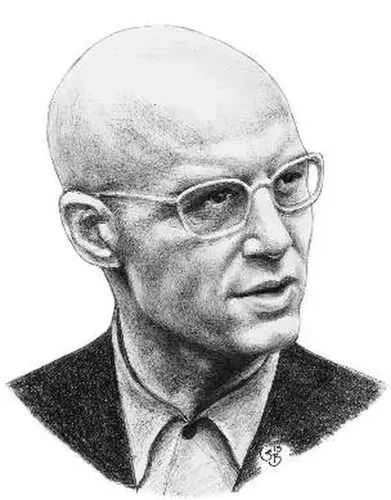
Grotendyk
Grothendieck was born on March 28, 1928 in Berlin, Germany. His father was killed by the Nazis during World War II. After the war, Grothendieck went to France to study mathematics, studying under Jean-Alexandre Eugène Dieudonné, an analytical master of the Bourbaki school, and Laurent Schwartz, a famous functional analysis master. , it is worth mentioning that in his twenties, he became an authority on topological vector space theory, which was very hotly researched at that time. The theory of profiles he founded laid the foundation for modern algebraic geometry.
Thanks to Grothendieck's many pioneering works, algebraic geometry, an ancient branch of mathematics, has been given new vitality, culminating in Pierre Deligne's complete proof of the Weil conjecture, which is considered the most important work of pure mathematics in the 20th century. One of the most significant achievements.
Due to Grothendieck's outstanding leadership, the Institute for Advanced Study in Paris was recognized as the world's algebraic geometry research center, for which he won the Fields Medal, the highest international award in mathematics, in 1966.
Grothendieck was a radical pacifist who gave up his mathematical research for the war effort. During the Vietnam War, he taught category theory to local scholars in the forests of Hanoi. In 1970, at the age of 42 and at the peak of his research, he gave up mathematics completely and left the Institute for Advanced Study in Paris. Later, he taught at the University of Montpellier in France until his retirement at the age of 60. On his 60th birthday in 1988, Grothendieck unexpectedly declined the Crafoord Prize and the $250,000 prize awarded to him by the Royal Swedish Academy of Sciences. The reason is that he believes that the money should be spent on young and promising mathematicians.
Grothendieck is recognized as one of the greatest and most influential mathematicians of modern times. The profound theoretical system of modern algebraic geometry he founded brought about tremendous changes, affecting almost all core branches of mathematics. When people open any modern algebraic geometry textbook or monograph, they will frequently see terms such as Groth. topology, Groth. cohomology, and Groth. ring.
It is worth mentioning that at the International Congress of Mathematicians in 1970, the blind Soviet mathematician L Pontrjagin gave a report on "Differential Countermeasures", in which he talked about the problem of using missiles to track aircraft. Grothendieck angrily walked on stage and grabbed the microphone, protesting his reference to the military at a mathematics conference.
G Hardy once said: "Real mathematics has no impact on war and is considered a 'harmless and innocent' profession". Perhaps this was why Grothendieck chose mathematics. But Grothendieck gradually became disappointed to find that mathematics was often used in the military. For example, the algebraic geometry he studied was used to compile codes, and most mathematical research was directly or indirectly supported by the military. Obviously, he believed that it was contrary to his ideal. . So in 1970, he permanently left his beloved mathematics career and turned to disarmament activities and farming.
05
French Mathematics Mulan - Sophie Germain
Sophie Germain (1776~1831) was a French female mathematician. Born in a prosperous businessman family in Paris, I loved mathematics since childhood, but my family did not encourage it. Her father was a French bank president.
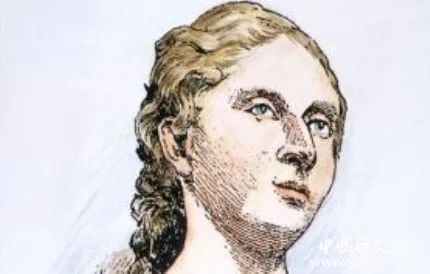
Sophie Germain
Germain's love for mathematics originated from a story since he was a child. One day, Germain read that when Rome captured the ancient city of Syracuse, Archimedes was still concentrating on studying the geometric figures composed of a pile of sand, and did not hear a question from a Roman soldier, which led to his death. Germain thought at the time that if someone could be so obsessed with something, even risking life and death, this thing must be the most beautiful and charming thing in the world. So she chose mathematics and taught herself calculus.
French women were severely discriminated against academically at the time. For example, Polytechnique did not accept female students. Germain thought of a way. She got all the math textbooks in the school, studied them by herself, and turned in the homework in the name of the boy Le Blanc. After reading Germain's paper, the famous French mathematician Lagrange admired it greatly and decided to go to Le Blanc's house to meet this smart top student in person. Germain disguised herself as a man, but ended up being a gangster, but Lagrange happily accepted Germain as his apprentice.
Germain chose Fermat's Last Theorem, which was the most famous at the time, as her research direction. Soon, she sent her research results to the mathematician Gauss, and received very high praise from Gauss. This research result of Germain was Thinking it was the best at the time, when she was only twenty years old.
In 1816, a bounty offered by the French Academy of Sciences exploded in the mathematics community. The bounty was for mathematical expressions on elastic surfaces. Unexpectedly, Germain eventually won and became the first person to win the "Academy of Sciences Gold Medal" for his academic achievements. Medal" for women. But it is a pity that this female mathematician, known as the "Mulan of French Mathematics" and the first female mathematician to make major achievements in modern history, is still discriminated against despite her fruitful achievements in number theory and applied mathematics.
Germain never obtained any degree or worked as a university professor in her life, but her identity was registered as an "unmarried woman without a profession" on her death certificate. In order to commemorate Germain's great contribution to number theory, later generations called p and 2p+1 prime numbers "Sophie Germain primes". A street and a high school in Paris are also named after Germain.
The three most important French mathematicians of the 20th century were Cartan, Weil, and Grotendiek.
03
Three outstanding French mathematicians of the 20th century
01
Mathematics master Chen Shengshen’s teacher——Jiatan
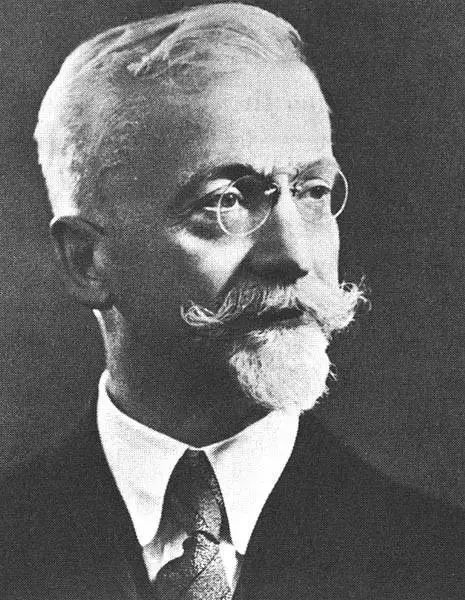
Elie Gartan
Eli Cartan, also translated as Eli Cartan (Joseph Cartan, April 9, 1869 - May 6, 1951), was a famous French mathematician. Cartan was born in Dolomme, Savoie, and became a student at the Ecole Normale Supérieure in Paris in 1888. He laid the foundation for Lie group theory and its geometric applications. He also made significant contributions to mathematical physics, differential geometry, and group theory.
Cartan made a great contribution to the development of modern mathematics. Among them, analysis on manifolds is an extremely active branch of mathematics today. Cartan can be regarded as an important founder of this branch. He is undoubtedly one of the greatest mathematicians and is known as the father of classical differential geometry.
Chen Shengshen came to Paris in September 1936 and met with Cartan. Cartan was highly respected and well-known at that time. Because he was very busy with official and private affairs, he only met with students on Thursday afternoons. By then, there was always a long queue at the door of the office.
When Chen Shengshen and Cartan met for the first time, the meeting gift given by the other party was a mathematical problem related to network geometry. No matter how Chen Shengshen tried to figure it out at the time, he couldn't figure out the answer. Chen Shengshen felt that it was too embarrassing to be unable to solve the first question. From then on, he was embarrassed to see Jiadang again. Some time later, Chen Shengshen and Cartan met by chance on the stairs of the Institute of Mathematics.
Katan asked: "Why haven't I seen you for a long time?" Chen Shengshen told the truth. Jiadang smiled and said, "It doesn't matter, that's a difficult problem. Do it slowly." He then said, "You can come from now on." After Chen Sheng came back, he went to see Jiadang. As a result, both parties get to know each other better and better.
One day, Jiadang told Chen Shengshen: "From now on, you will come to my house once every two weeks, and the conversation time will be one hour." Undoubtedly, this was tantamount to giving Chen Shengshen a small start. The face-to-face guidance from the mathematics master allowed Chen Shengshen to learn the teacher’s mathematical language and way of thinking.

Chen Shengshen (October 28, 1911 - December 3, 2004), whose ancestral home is Jiaxing, Zhejiang, is one of the greatest geometers of the 20th century and is known as the "Father of Differential Geometry"; former first academician of the Academia Sinica, Academician of the U.S. National Academy of Sciences, founding member of the Third World Academy of Sciences, foreign member of the British Royal Society, foreign academician of the Italian National Academy of Sciences, foreign member of the French Academy of Sciences, and the first batch of foreign academicians of the Chinese Academy of Sciences.
Graduated from Tianjin Nankai University in 1930. Obtained a Master of Science degree from Tsinghua University in 1934. In 1936, he received a doctorate in science from the University of Hamburg, Germany. From 1984 to 1992, he served as the director of Tianjin Nankai Institute of Mathematics, and since 1992 he has been the honorary director.
On December 3, 2004, Chen Shengshen passed away at the Tianjin Medical University General Hospital at the age of 93. Chen Shengshen developed the Gauss-Bonnet (Gauss-Bonnet) formula, which was named "Gauss-Bonnet-Chen Shengshen formula".
02
The spiritual leader of the Bourbaki school - Weil
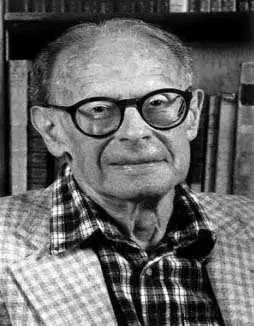
Wey
Weil was a French mathematician. Born on May 6, 1906 in Paris, France. Due to his brilliant achievements in algebraic geometric methods in number theory, he won the Wolf Prize in Mathematics in 1979 at the age of 73.
After returning to China in 1928, he wrote the paper "Arithmetic on Algebraic Curves" and received his doctorate at the age of 22. From 1930 to 1932, he worked as a professor at the Muslim University in Aligarh, India. As World War II approached, France began to expand its military and prepare for war. Weil was unwilling to join the army. In the summer of 1939, he evaded military service and was initially imprisoned in 1940. France soon fell. In 1945, he went to Brazil to teach at the University of Sao Paulo. From 1947 to 1958, he was a professor at the University of Chicago, and in 1958, he was a professor at the Institute for Advanced Study in Princeton. Weil is a foreign member of the National Academy of Sciences.
Weil was a founding member and one of the outstanding representatives of the French Bourbaki School. He was quick-thinking and talented. When he was twenty years old, he wrote his first paper "On Negative Curvature Surfaces", which transformed Kalleman's inequality into It is extended from minimal surfaces to general simply connected surfaces and pointed out that it does not hold for multi-connected surfaces.
Weil was a erudite mathematician. In nearly half a century, he successively achieved fruitful results in important branches such as number theory, topology, harmonic analysis, group theory, algebra, and algebraic geometry. Weil was the spiritual leader of the Bourbaki school. The idea of mathematical structure is that of the Bourbaki school.
When it comes to Weil, we have to talk about the French "Bourbaki" school. The Bourbaki school is a group of mathematicians who have a great influence on modern mathematics. Most of them are French mathematicians, and the main representatives are Weil, Didonne, Cartan, Xue Huali and others.
03
French master of mathematics and probability theory—Demoivre
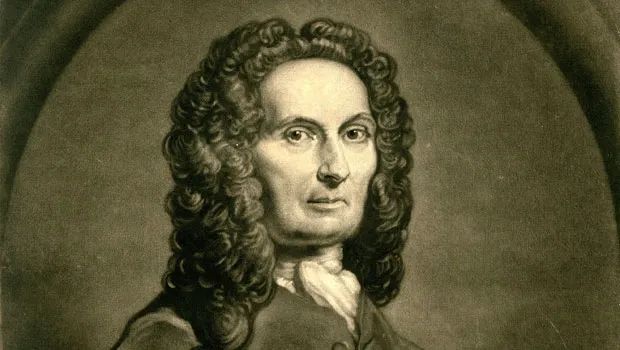
Abraham de Moivre
Abraham de Moivre was born on May 26, 1667 in Francois, Vitry, France; he died on November 27, 1754 in London, England.
De Moivre accidentally read Newton's "Principia" (Principia). He flipped through it and was surprised to find: "Mathematics is such a profound and beautiful subject!" So, he not only bought the book, but also Tear off the pages so you can carry them in your pocket and study them at any time. Chancellor WE once said: "Learning mathematics is to explore the mysteries of the universe. As we know, the laws of planets and strata, heat and electricity, variation and existence, all involve mathematical truths. If language reflects and reveals the voice of the Creator, then Mathematics reflects and reveals the wisdom of the Creator and repeats over and over again the story of how things mutate into existence.”
Probability theory began in the 17th century. Cardano, Fermat, Pascal and others were the early researchers of probability theory. They mainly studied the probability-chance issues of independent random events. For example, discuss the "opportunities" in gambling and lottery processes.
Later, people asked to solve the problem of probability or expected value related to a large number of event sets. For example, the total number of lottery tickets is very large. It is known that each lottery ticket has an equal chance of winning. So what is the probability of winning if 1,000 or 10,000 lottery tickets are drawn? If you want to ensure that the probability of winning is 90%, then how many lottery tickets should you buy at least.
Consider a series of random events (such as tossing a coin randomly). The probability of a certain event occurring (such as heads when tossing a coin) is P. n represents the total number of all random events, and m is the number of occurrences of a certain event. Then the event What will be the pattern of the ratio of the number of occurrences (m) to the number of all events (n)? This became a very important issue in probability theory in the 17th century.
There are three milestone works in the earlier history of probability: one is De Moivre's "On Chance", the other is Bernoulli's "The Art of Speculation", and the third is Laplace's "Analytical Theory of Probability".
The statistical significance of De Moivre's work lies in: First of all, using the special case of frequency estimation probability, the accuracy of the arithmetic mean of the observations is proportional to the square root of the number of observations N. This can be seen as a major progress in human understanding of nature.
Secondly, the greatest impact of De Moivre's work on mathematical statistics is, of course, the central limit theorem named after him. About 40 years after De Moivre made his discovery, Laplace established a more general form of the central limit theorem. The most general forms of the independent and central limit theorems were not finalized until the 1930s.
04
Why is French mathematics so good?
01
Reasons for the rise of French mathematics
The historical reasons for the rise of French mathematics are one scholar, two monarchs, and one institution, which played a vital and huge role: one scholar is Marland Mason; the two French monarchs refer to: Louis XIV and Napoleon; one institution Refers to: French Academy of Sciences.
Marin Mersenne (1588-1648) was a famous French mathematician and monk in the 17th century. He was selected as one of the 100 scientists with an important position in the history of world science. Marlin Mersenne was the first to systematically and in-depth study the 2^P-1 type number. In order to commemorate him, the mathematical community called this number Mersenne number and recorded it as Mp, that is, Mp=2^P-1. If a Mersenne number is prime, it is called a Mersenne prime number.
The origin of all French mathematics began in the residence of the mathematician Malin Mason in the monastery in the mid-17th century. Malan Mason graduated from a Jesuit school as a boy and was a fellow student of Descartes, the French mathematics master.
Mason was talented and approachable. Due to his personal charm, he had established good connections with scientists all over Europe. There was also a large number of scholars gathered around Mason who regularly discussed scientific issues in Mason's apartment. Later, these scientists' salon gatherings in Mason's residence were called Mason College, which was the academic exchange center in Europe at that time. In history, there is the famous child prodigy Pascal. He was only fourteen years old at the time, but he had already shown extraordinary talent in mathematics.
Mason accepted Pascal into the Mason Academy and encouraged Pascal to conduct further research based on Torricelli's work. As a result, Pascal lived up to expectations and proposed the famous Pascal's Law. Mason's friend Fermat developed the mathematical branch of probability theory at the same time as Pascal. He was praised by later generations as the most outstanding amateur mathematician because many people who did not understand mathematics had heard of Fermat's theorem.
When Mason died in 1648, people found in his estate very precious letters between Mason and 78 European scholars, who were involved in many scientific fields, including many mathematical masters such as Fermat, Galileo, Torricelli, and Descartes. , Huygens. France's most precious heritage, the Académie Mason, became today's Royal Academy of Sciences in Paris. In 1666, the Royal Academy of Sciences in Paris was established.
After that, the young Louis XIV of France decided to build an official Academy of Sciences to promote the development of French science. The Royal Academy of Sciences in Paris was officially named, and Louis XIV provided a large amount of financial sponsorship in order to relieve scientists' life and research pressure. Although Colbert, Louis XIV's finance minister, was usually very careful about budgeting, he also began to invest large sums of money to quickly recruit a large number of outstanding talents at home and abroad.
Among the foreign scientists, the most famous is Giovanni Domenico Cassini, who came from the University of Bologna in Italy and was an outstanding astronomer at the time. He headed the Department of Astronomy at the University of Bologna for many years. Signy was world-famous for his observations of Jupiter and Mars, and became the head of the Paris Observatory during the reign of Louis XIV. Since then, with the strong financial support and the support of the Huygens-Cassini dual core, French mathematics has risen strongly in Europe with the power of Louis XIV, and has become the academic center of the European continent.
In 1672, the Paris Academy of Sciences welcomed the young German politician Leibniz. Leibniz was not only a German philosopher and mathematician, but also a rare generalist in history. He was known as the Aristotle of the seventeenth century. Leibniz was a lawyer and often traveled abroad, so many of his formulas were completed on a bumpy carriage.
Leibniz occupies a very important position in the history of mathematics and philosophy. Especially in mathematics, he and Newton independently discovered calculus. The symbols invented by Leibniz are generally considered to be more comprehensive and have a wider range of applications. Leibniz also invented and perfected binary.
In philosophy, Leibniz is most famous for his optimism: "Our universe," he said, "is in a sense the best of God's creations." He, Descartes, and Baruch Spinoza are considered the three greatest rationalist philosophers of the seventeenth century.
Leibniz came to Paris originally to undertake a diplomatic mission. Unexpectedly, he met Huygens and Cassini and embarked on the path of science. Under the guidance of Huygens, Leibniz began to study mathematics systematically. Under the guidance of the master, his mathematical skills improved rapidly.
Thanks to the efforts of the Paris Academy of Sciences at that time, many masters who were almost famous for their academic achievements regardless of their background were recruited to its name. For example, d'Alembert, the leader of the Encyclopedia School, was an illegitimate son of a humble background. However, due to his modest achievements in academic circles, he was promoted to associate academician of the Department of Mathematics at the age of only 24 and won a seat at the Paris Academy of Sciences. The French Academy of Sciences was able to do so at that time. To promote talents in an eclectic way.
In 1768, Laplace (a famous French astronomer and mathematician, a master of celestial mechanics) who was born in a humble background was also admitted to the French Academy of Sciences. The 19-year-old farmer's boy showed his extraordinary abilities for the first time in France. Extraordinary mathematical talent.
After the death of Frederick the Great, the Paris Academy of Sciences poached Lagrange, who was nearly half a century old, from the rival Academy of Sciences in Berlin, Germany. Lagrange and Laplace also became guests. France thus gathered the three mathematical giants d'Alembert, Laplace, and Lagrange, which greatly consolidated the academic status of the Paris Academy of Sciences in the world.
Laplace became vice-president of the French Academy of Sciences in 1796 and was promoted to president the following year. Laplace used his high position to single-handedly improve higher education in France. He renovated the Ecole Normale Supérieure and the Ecole Polytechnique in Paris, and worked with Lagrange on teaching, hiring a group of world-class professors. Among them was Gaspard Monge, the discoverer of projective geometry. He escaped from Paris during the revolution and was now invited to teach projective geometry. LaGrange even listened to his classroom debut in person.
The first batch of students of the Ecole Normale Supérieure included Fourier, a local teacher who was quite accomplished in the field of heat conduction. Later, Monge and Fourier accompanied Napoleon on his expedition to Egypt and have been serving the army as scholars accompanying the army.
The French Academy of Sciences trained a large number of French stars in the first half of the 19th century: such as the famous physicist Ampère, whose name is used as the unit for measuring electric current; Carnot, one of the founders of thermodynamics; Fresne Fresnel, who led the confrontation between the wave theory and Newtonian particle theory in optical research; and Poisson, who left his own theorem named after himself in the fields of mathematics and physics.
Therefore, the first stage of French mathematics relied on scholars' spontaneous love for the subject; the second stage relied on the strong financial support of enlightened monarchs; and the third stage relied on advanced academic training systems.
The Paris Academy of Sciences knows how to respect and absorb talents. For example, when the Royal Academy was founded, the core figures Huygens and Cassini were not French, but the French government trusted them very much and entrusted the academy to them; Bunitz has lived in Germany for a long time, but is still a corresponding academician of the academy; D'Alembert and Laplace, who are from humble backgrounds, can still rank among the nobility with their academic achievements; Lagrange is an Italian and is over half-year-old. Bai was still invited by France and played a huge role in the reconstruction.
Since the 1720s, a large number of brilliant mathematical masters have emerged in France, each of whom is a proud figure in the history of global mathematics. Such as D'Alembert, Lagrange, Laplace, Monge, Poncelet, Cauchy, Galois, Poincaré and so on.
02
France is a country that values mathematics very much.
Many people believe that the French are far worse than the Chinese in mathematical calculations, that the French are not good at mathematics, or that the French do not pay attention to mathematics. In fact, mathematical talents are very popular in France. In France, mathematics talents have a much higher probability of finding the job they want than college students in popular majors such as business management and computer science.
For example, the French Ministry of Higher Education and Research released survey data on the employment rate of graduates from comprehensive universities for four consecutive years on December 18, 2013. A survey surprisingly found that the most popular talent in the French job market is mathematics! Among them, the employment rate of mathematics researchers is as high as 98%.
France has a famous Polytechnic Institute (École Polytechnique), which enjoys a high reputation in the French education community. Its school name itself represents strict selection and outstanding academics. The Ecole Polytechnique is ranked among the French engineering schools. It often ranks first in the rankings: especially in the rankings of "Express" weekly, "College" monthly, and "Challenge" weekly. The famous MIT in the United States considers it the most prestigious engineering school in France.
A former doctoral student in Jussieu Mathematics at the University of Paris VI said: “From a historical and traditional perspective, France is a country that values mathematics very much, and the tradition of mathematics is very good. It is a truly big and powerful country in mathematics. "
Throughout the history of French science, you will find that many famous Western mathematicians came from France: from Pascal, the founder of modern probability theory, to mathematical masters Fourier and Lagrange, from Descartes, the father of analytic geometry, to Rapp Simon Laplace, the discoverer of the Lars equation, Monge, the founder of graphic geometry, de Montmartre, the famous figure in the field of probability theory, and so on. It is worth mentioning that from the 17th to the 19th century, France was definitely the leader in the field of global mathematics.
The famous German mathematician Gauss has a conversation in his biography, saying that a foreigner asked the locals in Paris, France: "Why have there been so many great mathematicians in French history?" The French replied: "Our best People learn mathematics." The foreigner asked the French mathematician: "Why is French mathematics always famous in the world?" The mathematician replied: "Mathematics is the best part of our traditional culture."
In fact, the popularity of mathematics in the French job market has a lot to do with the role of mathematics as a basic subject in a technological society. Mathematics is the most basic and core subject in modern technological society. Compared with other subjects, such as physics, chemistry, and biology, , mechanics, etc. all have very important influence and status.
Mathematics is divided into pure mathematics and applied mathematics. In fact, many scientific research work has a very important logical relationship with mathematics. For example, computer partial algorithms belong to the field of applied mathematics. Even the banking and financial systems, such as BNP Paribas, Société Générale or French energy companies, most of the research talents they need value mathematical talents, and more of them are applied mathematics. Therefore, in France, whether academic or practical, mathematics talents occupy an important place in the French job market.
03
French mathematics education and rigorous education system
French higher education is considered by some to be the most difficult and rigorous exam-oriented education system in the world, also known as the preparatory (prepa) system. French students must study very hard in calculus and linear algebra during those two years (or three years) in order to cope with what is considered the "most difficult college entrance examination" in the world.
In fact, France has a unique "dual-track" higher education system in the world in the higher education stage after basic education. There are 90 public universities in France, as well as more than 240 engineering colleges, more than 230 higher business schools, and fewer higher education institutions such as higher art schools and architectural design schools.
In France, nearly 600,000 high school graduates take the national college entrance examination every year. According to statistics, only 85% of students can reach the score line. 90% of those who meet the standards will directly enter public universities, and about 10% of the top students will choose to enter "preparatory schools" for two years of "exam-oriented education." In the end, after brutal elimination and selection, the winner can enter the "Grand School" in France that cultivates elite talents. Calculating this, less than 8% of French students are lucky enough to be admitted to the top of the ivory tower of university every year.
It can be seen that French public universities are actually open higher education institutions and a symbol of the democratization and equality of higher education in France. In contrast, "big schools" are relatively closed and specialize in cultivating young elites. Importantly, the two types of higher education institutions are very different in terms of investment funds, learning conditions, education and management models, years of study, degree diplomas, and employment prospects.
There is a saying in France that if not every student from an elite university is a leader in French politics, finance and business, at least it can be said that almost all the leaders in politics, finance and business are graduates of elite universities. It is worth mentioning that since the beginning of this century, the French government has begun to organize a unified national entrance examination for "preparatory schools" after high school. Therefore, France has become quite institutionalized in terms of civilian and elite education.
An interesting thing about French mathematics is that primary school students in other countries count sequentially from 1 to 100, but French children start to add and subtract within 100. For example, the French say 70 as 60+10 (Soixante-dix), 71 as 60+11, 99 is not pronounced as 99, but 4x20+10+9 (Quatre-vingt-dix-neuf), and even multiplication is included. . The reason why it is so complicated is that French numbers are not purely decimal, but use a mixture of decimal, hexadecimal, and sexagesimal systems. They use decimal numbers to express the hexadecimal and sexagesimal algorithms, which undoubtedly significantly increases the calculation steps.
The French are very interested in extrapolation and focus their teaching on it. For example, French students cannot memorize formulas, and schools treat mathematics as a mental gymnastics exercise for students. During the exam, the school will set aside a lot of time for students to slowly deduce and then slowly solve the questions. When French students solve problems, they all derive them step by step. They are not anxious at all and never skip steps. They also enjoy the process of derivation very much.
During the derivation period, students' logical thinking ability and creativity are exercised. Especially the formulas they derive are very satisfying, and students often like this subject very much.
Note: This article is reproduced from French World & Rao Yi Science, with slight changes.
Recommended books about French mathematicians and stories
Coming soon

"Alice's Adventures in Geometry"
Author: [France] Jean-Louis Brahan
Translator: Liu Yan
Available in September!
Starting from the "Cube City", visit the "Sphere City", fly over the "Central Plateau", overlook the "Infinite Desert", admire the magnificent "Twelve Cubes" and "Reflection Terrace", and compete with the "Geometric Fallacy"...
What secrets are hidden in the Kingdom of Geometry? What geometric treasures will you discover? What strange people and strange things will you encounter?
·Adventure, enlightenment, a wonderful journey of space and imagination
·More than 200 exquisite illustrations, appreciate the wonderful scenery of the geometric kingdom and explore the secrets of solid geometry
·Cube, cylinder, sphere, contours, perspective, projection, reflection... Vivid stories tell rich geometric knowledge
·Perceive the beauty of mathematics in life, expand spatial imagination, and stimulate interest in learning geometry and composition
01
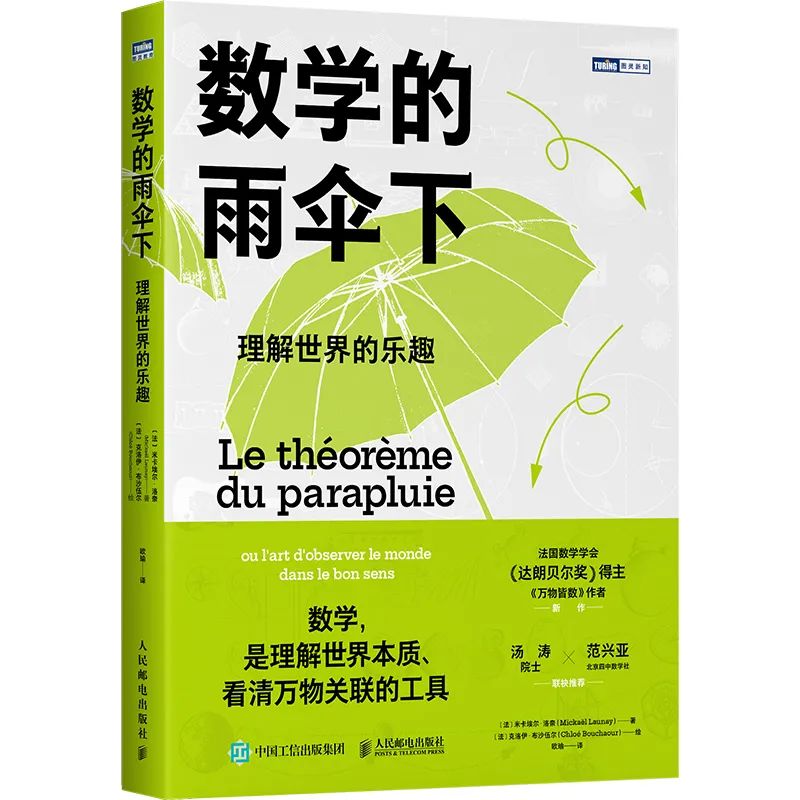
"Under the Mathematics Umbrella"
Author: [France] Mickaël Launay
Translator: Ou Yu
surprise! It is the starting point for thinking;
Mathematics is a tool for understanding the nature of the world and the relationship between all things!
Take mathematics as the starting point and think as happiness!
A masterpiece of science popularization by the winner of the "D'Alembert Prize" of the French Mathematical Society.
Mathematics is a tool for understanding the nature of the world and the relationship between all things. It can create two compasses: one is called "practical" and the other is called "elegant". Without understanding the meaning of mathematics, you cannot truly learn and understand mathematics.
Why are scientists so smart? Because they have extraordinary ways of thinking.
Use mathematics as a tool and thinking as happiness; cultivate your thinking and observation skills and become a true thinker.
02
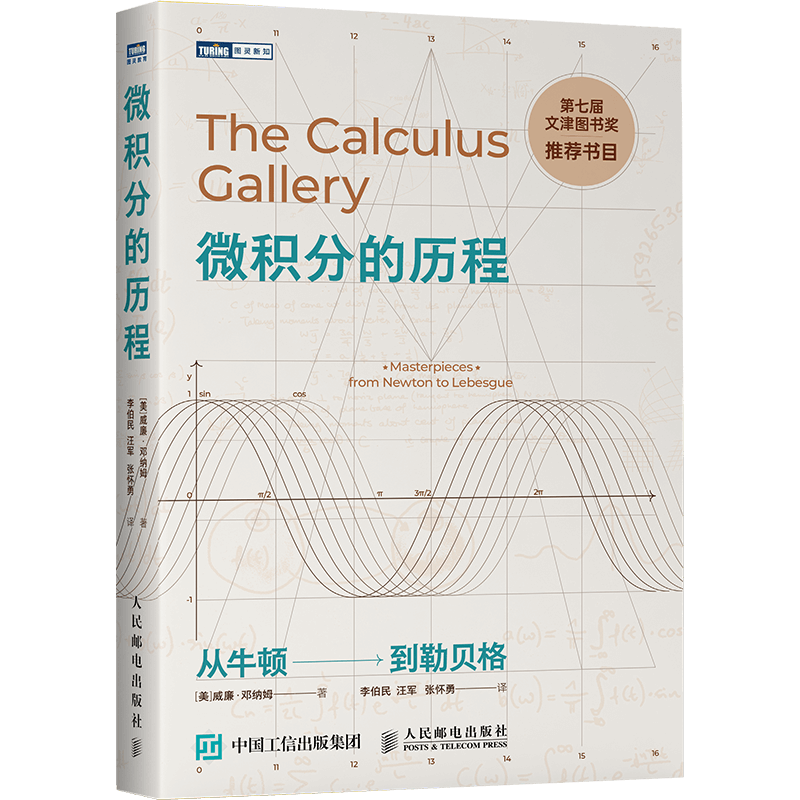
"The Journey of Calculus: From Newton to Lebesgue"
Author: Dunham
This book won the "Recommended Book List of the 7th Wenjin Book Award".
This is not a biography of a mathematician, but a showcase of the grandeur of calculus. Every result in the book, from the derivation of Newton's sine function, to the representation of the gamma function, to Bell's classification theorem, is at the forefront of research in various eras, and is still shining with dazzling light.
03
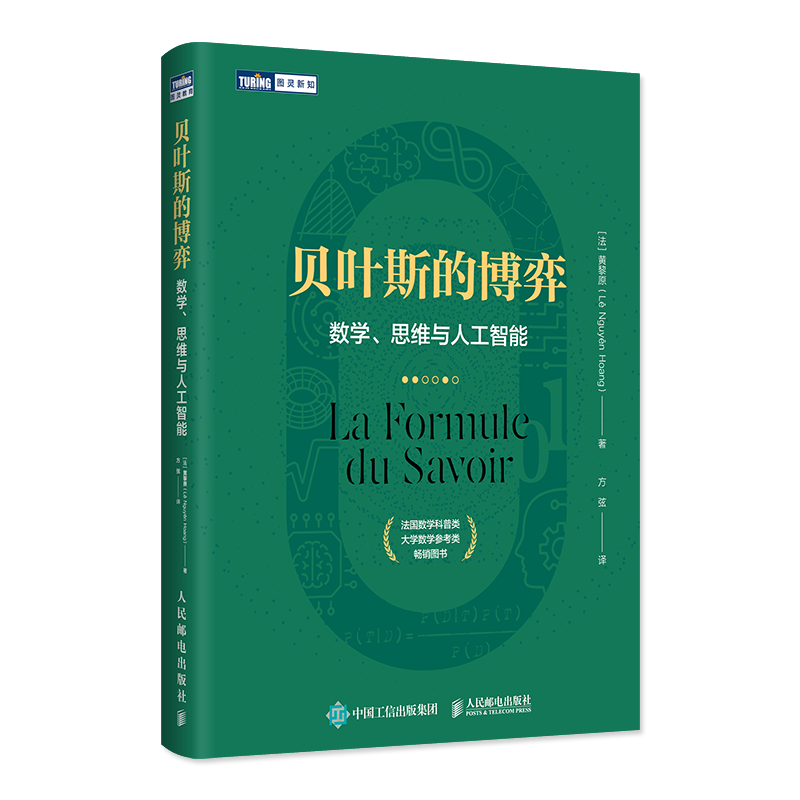
"Bayesian Games: Mathematics, Thinking and Artificial Intelligence"
Author: Huang Liyuan
A best-selling French mathematics popular science book, college mathematics reference and textbook book, it explores the wisdom and philosophy contained in Bayes' theorem in many fields such as machine learning, artificial intelligence, logic and philosophy.
Once Bayes' theorem is combined with algorithms, it is no longer a boring mathematical theory or epistemology, but becomes a widely used treasure trove of knowledge, giving birth to many modern mathematical theorems and commendable practical results.
04
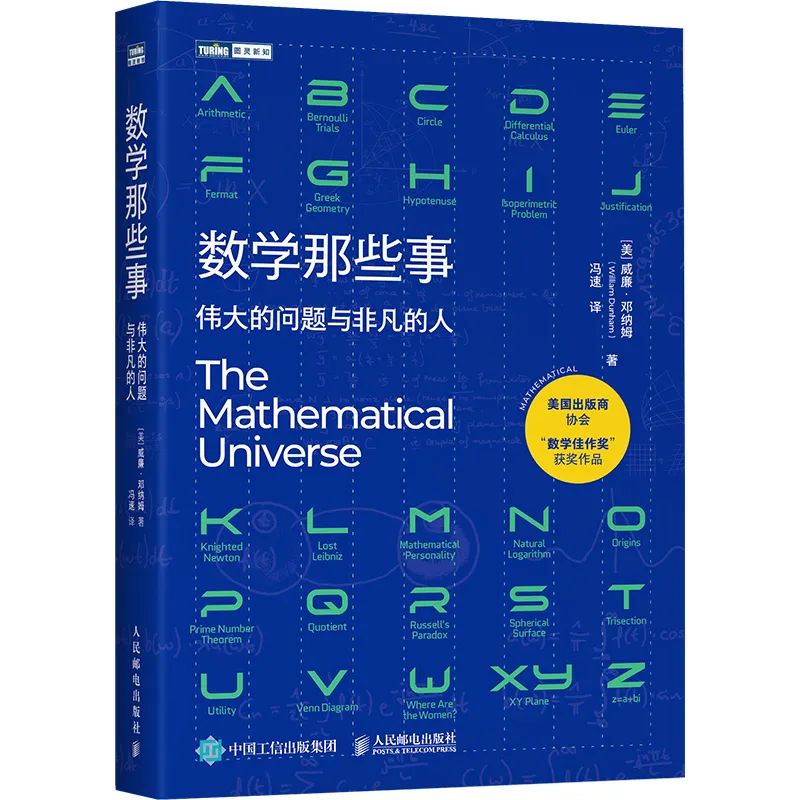
"Mathematical Things: Great Questions and Extraordinary People"
Author: William Dunham
Translator: Feng Su
No need to use paper and pen, you can have an overview of the great theorems, difficult problems and controversies that must be discussed in the world of mathematics; your curiosity will be satisfied and you can have an overview of the core knowledge and historical gossip of mathematics.
This book is a collection of short essays. The articles are arranged in order from A to Z according to the first letters of their English titles. Each essay tells a specific mathematical topic and introduces the great theorems, difficult problems, and problems that cannot be ignored in the mathematical world. Arguments and mysteries.
05

"The Birth of a Theorem: My Thousand Days and Nights with the Fields Medal"
Author: Cedric Villani
Translator: Ma Yue Yang Yuanyi
The best-selling biography of a contemporary French mathematician in the world, the wonderful journey of the famous mathematician Cedric Villani winning the Fields Medal, a true experience of the hardships and joys of a mathematical research career, and an understanding of the daily work and way of thinking of mathematicians.
06

"Mathematics is Ridiculous: 20 Interesting Math Questions to Excite Your Mind"
Author: [France] Jerome Cotenso
Translator: Wang Lie
An excellent French "funny" math internet celebrity blog, a French Amazon bestseller in mathematics, absurd questions that open your mind, alternative mathematical research, inspiring thinking, hilarious jokes, and rich comics, making mathematics no longer boring. obscure
07

"Not Enough Mathematics" (2 books in total)
Author: Jean-Paul Dreye
Translator: Lu Yao, Fang Xian
This popular mathematics science book in France has selected 20 well-known games to expand mathematical thinking while playing, and draw amazing mathematical results from games that children can play.
This book explains the way of thinking of mathematicians through 20 well-known games such as origami, poker, chess, Sudoku, and dice, revealing the fun of algebra, geometry, statistics, logic, and artificial intelligence in the game, and showing The unique role of game thinking in the development of algorithms, big data and artificial intelligence.
08

"The History of Minimalist Algorithms: A Story from Mathematics to Machines"
Author: [France] Luc de Brabandier
Translator: Ren Yi
A simple, easy-to-read and interesting history of human mathematics and philosophical thinking. It explores interesting mathematical problems and logical thinking puzzles, and reproduces the unique ways of thinking of philosophers, mathematicians and logicians. Mathematics, logic and computer science are moving towards artificial intelligence together. A smart dream journey.
09
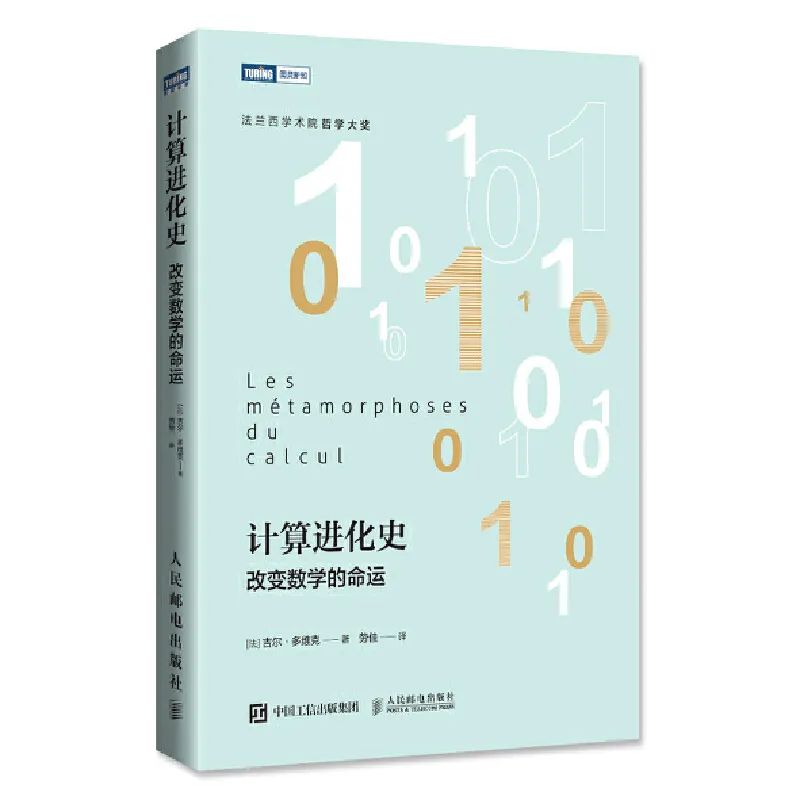
"The Evolution of Computing: Changing the Destiny of Mathematics"
Author: [France] Gill Dovik
Translator: Lao Jia
This book reviews the historical evolution of mathematics, logic, and philosophy from the unique perspective of the evolution of computing, and looks forward to the new prospects that computer science has brought to mathematics, as well as the major changes in the fields of natural science and philosophy that have resulted from this.
Shows the shocking power of computing in the era of algorithms for the study of natural science and philosophy. How a unique mathematical journey triggered a philosophical thinking that changed the face of science. A mathematics book that won the Prix de Philosophy of the French Academy. A philosophy book that all mathematics lovers should read.